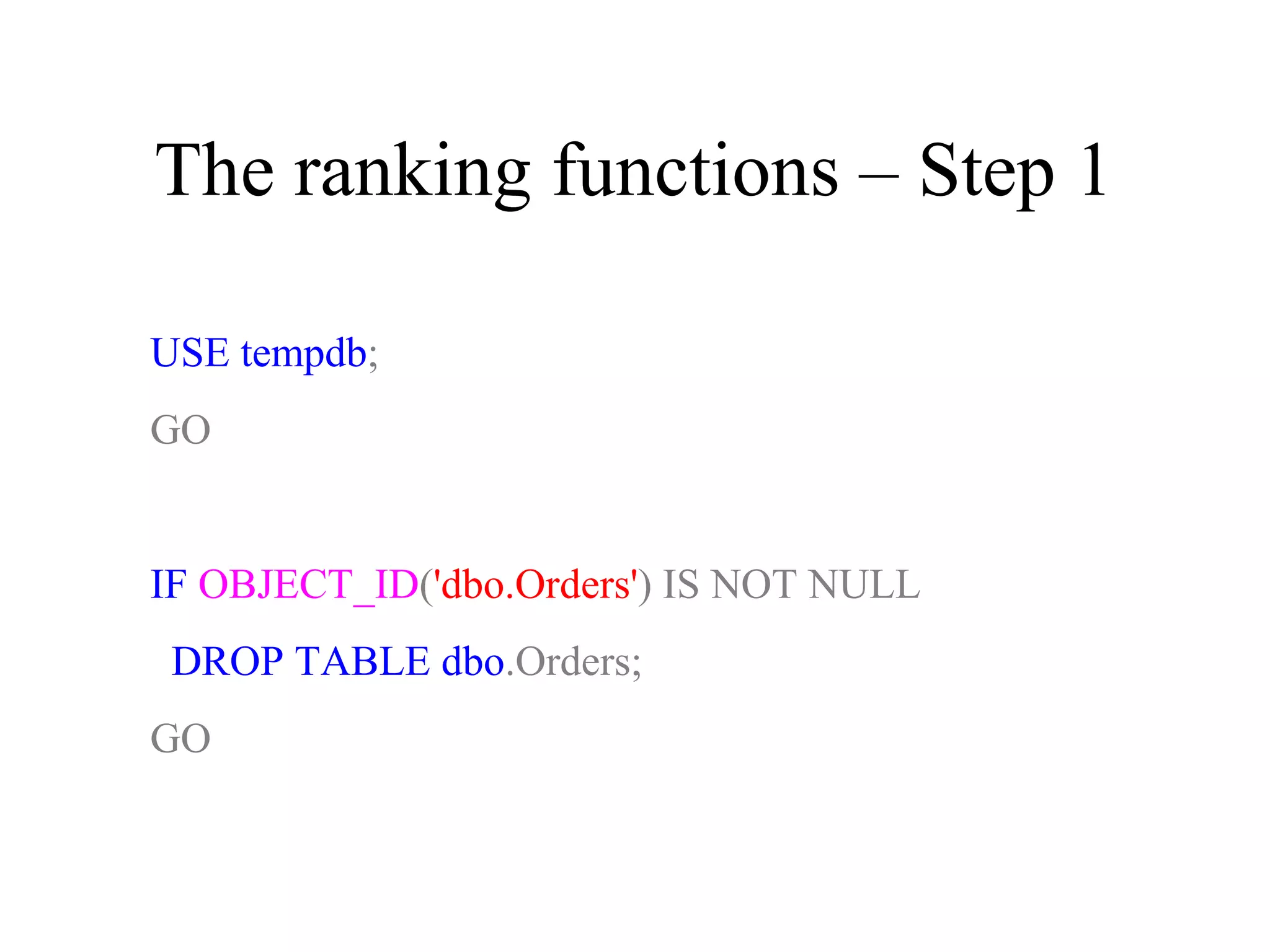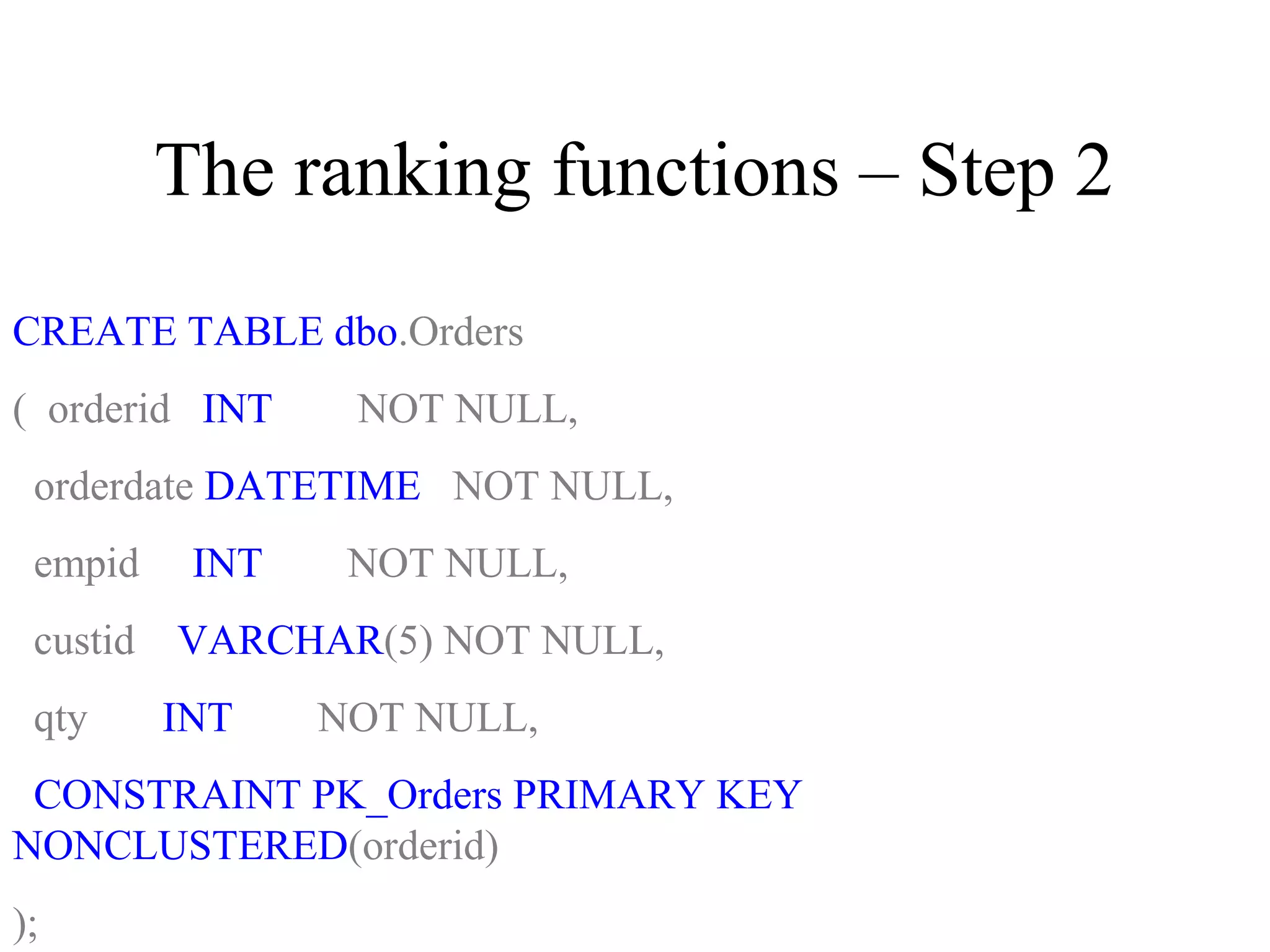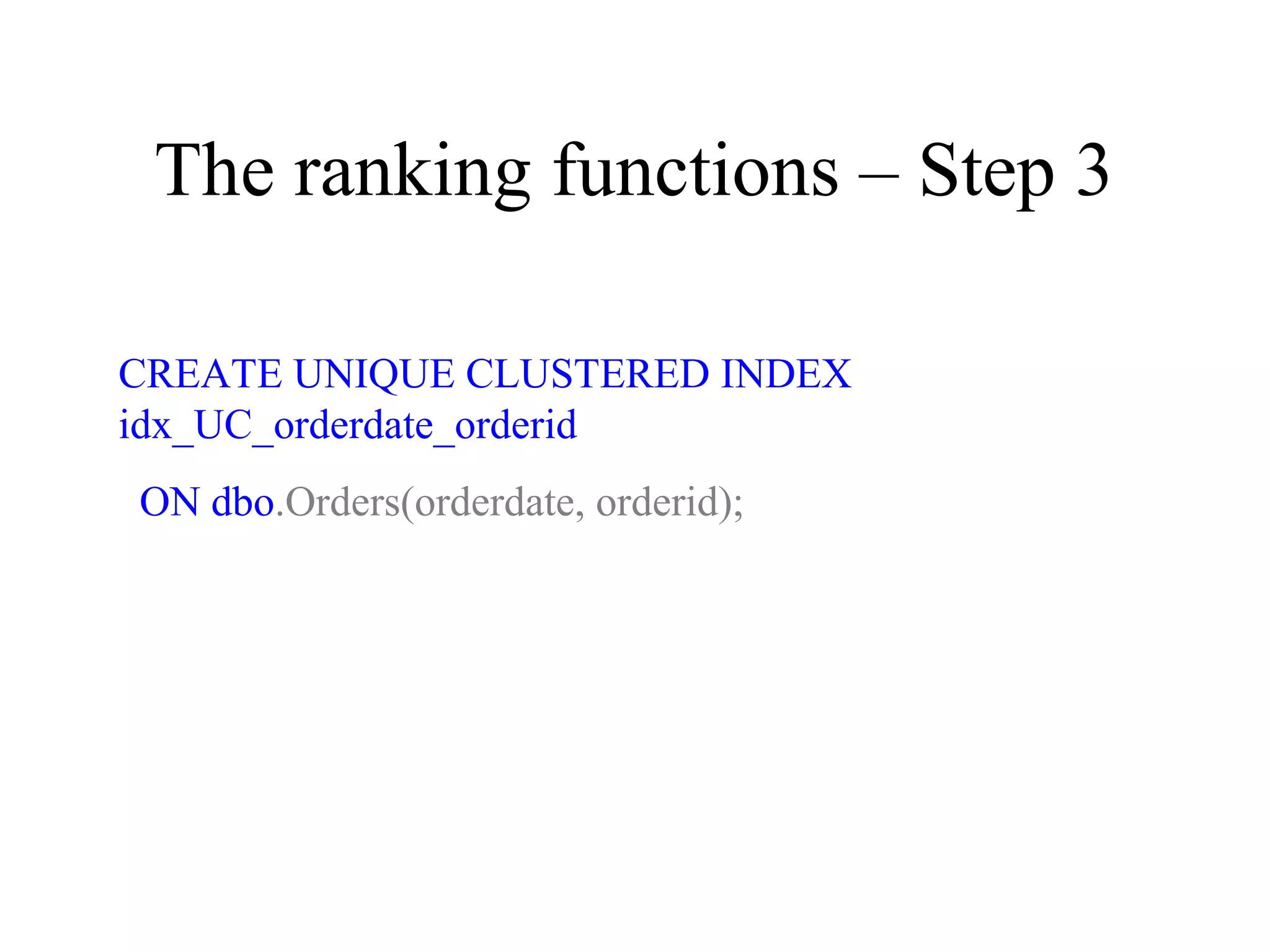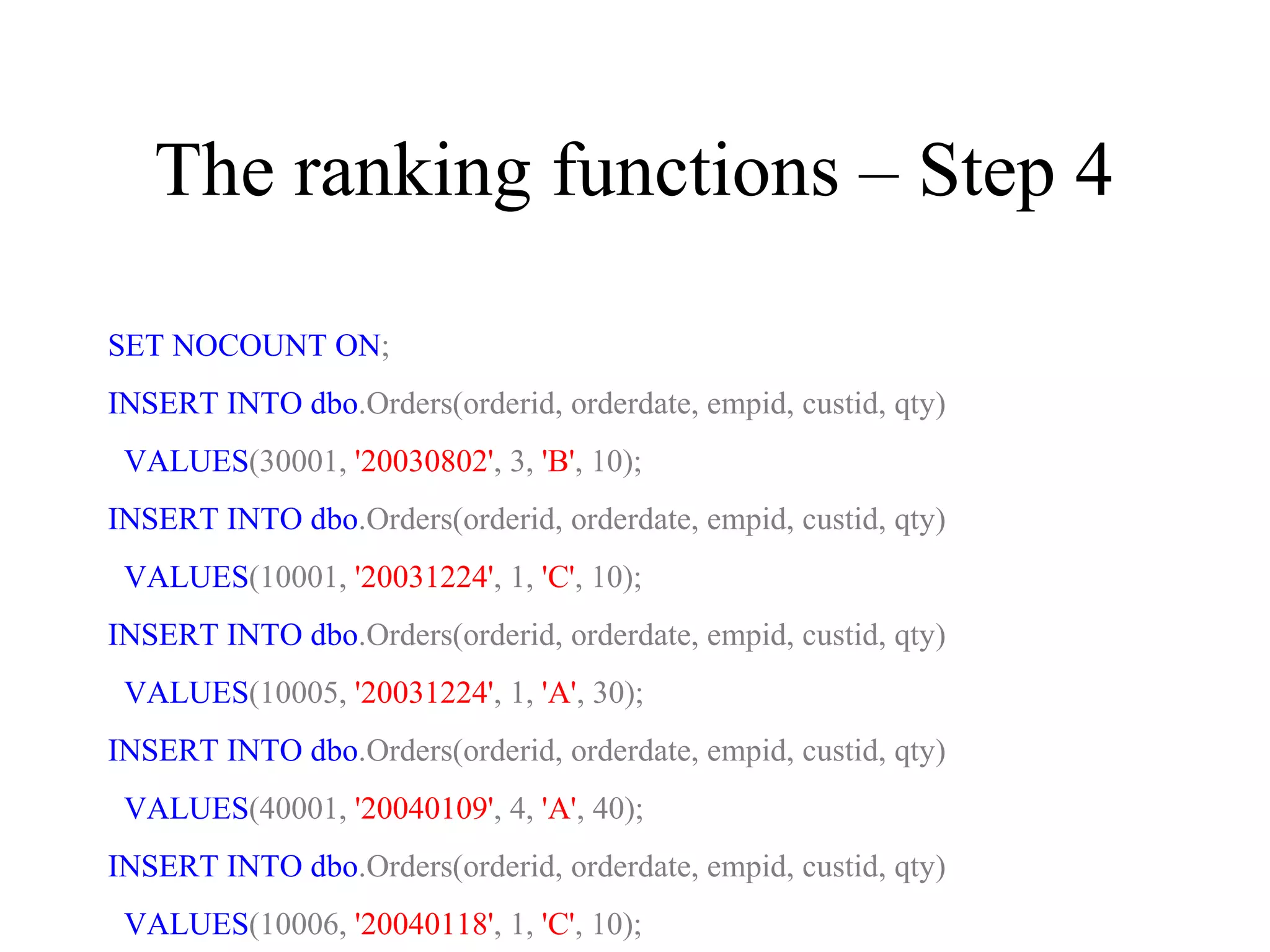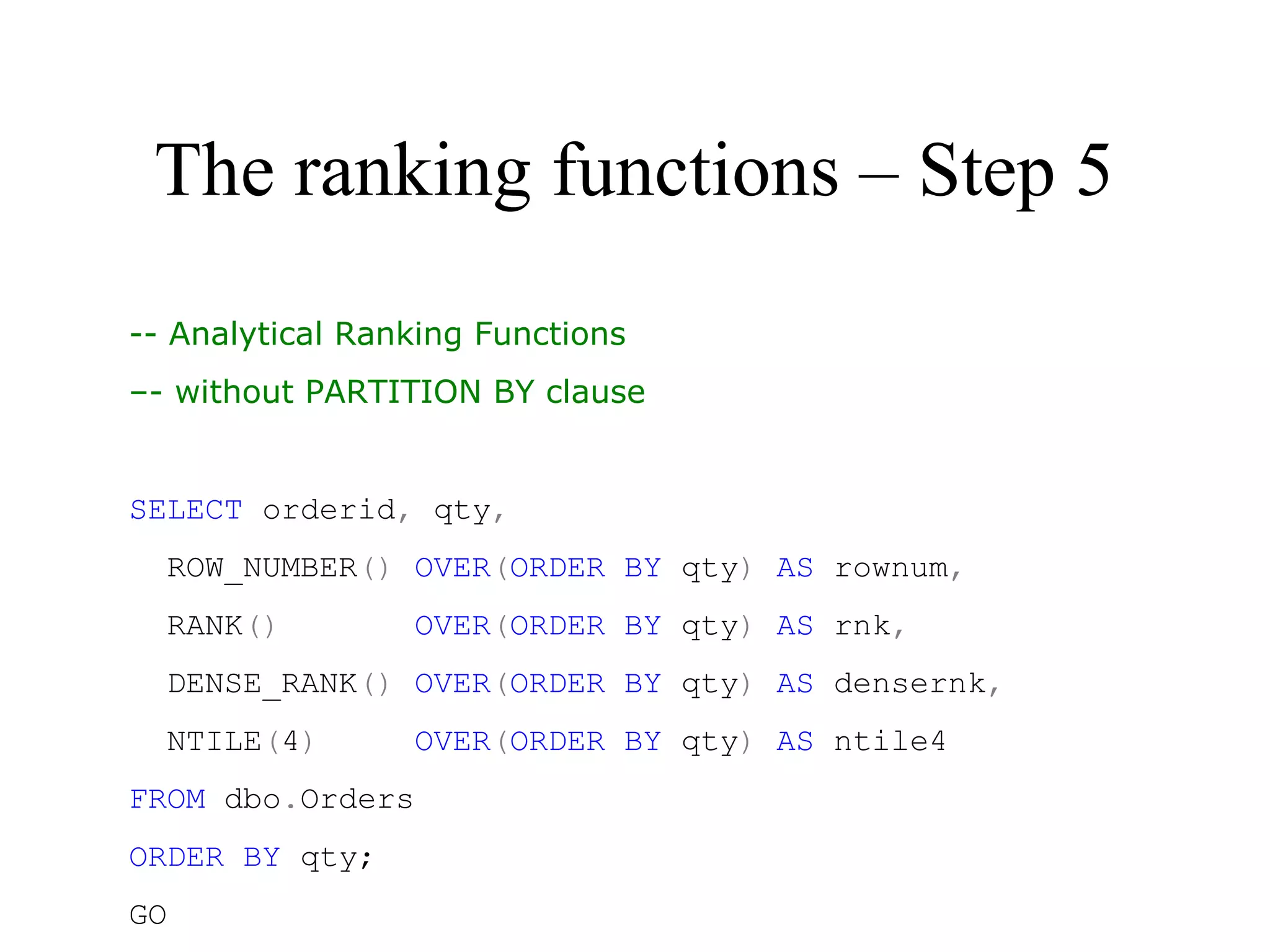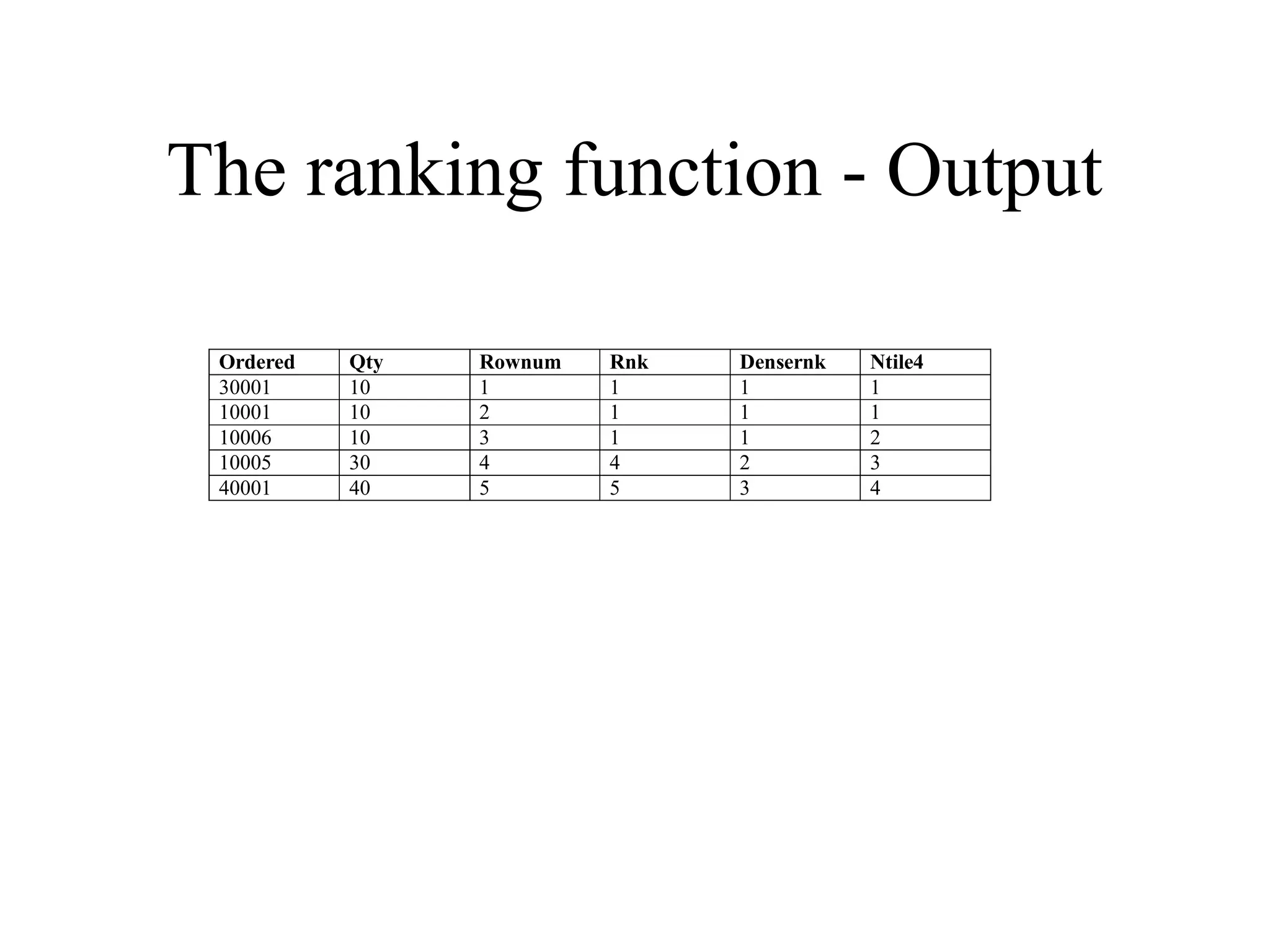This document discusses SQL ranking functions and provides an example of using ranking functions to assign sequential numbers, ranks, and quartile groups to rows in an Orders table ordered by quantity. It first creates the Orders table with sample data. It then uses ROW_NUMBER(), RANK(), DENSE_RANK(), and NTILE() analytical functions without a PARTITION BY clause to assign row numbers, ranks, dense ranks, and quartile groups based on ordering by quantity. The output shows the results.

